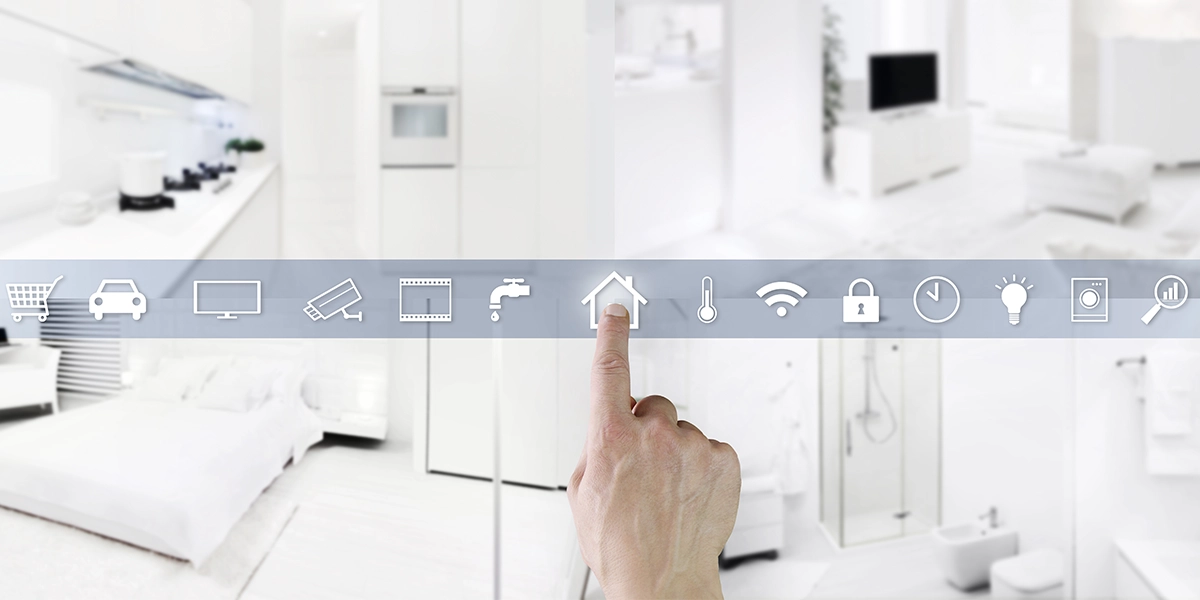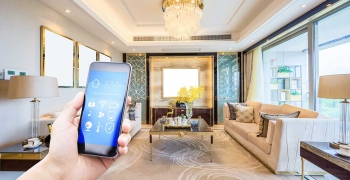Accelerating IoT Adoption: Enabling Smart Spaces
The Internet of Things (IoT) has emerged as the backbone of a densely interconnected world – reshaping how we live and manage modern ecosystems. With the global market for enterprise IoT expected to exceed USD 690 billion by the end of 2030, estimates suggest a 2024 demand of around USD 301 billion.
With rapid IoT adoption increasingly at the core of innovation across smart homes and intelligent cities, we explore how IoT-powered ecosystems are enabling the smarter homes and cities of tomorrow.
Transforming Smart Homes
IoT technology is an integral part of modern smart homes, delivering seamless automation and convenience. Connected devices are transforming household management, from improving energy efficiency to optimizing daily routines. This includes:
- Enhancing Daily Living
Imagine waking up to sunlight streaming through your automatically adjusted blinds while your smart coffee machine brews your morning cup of coffee. The scenario is no longer hypothetical; IoT-enabled devices such as Amazon Alexa, Google Home, and smart, connected kitchen appliances have turned it into reality. In addition, smart refrigerators today come equipped with built-in cameras, allowing users to check food supplies in real-time via an app. They can send expiration date alerts and even suggest recipes based on ingredients in stock, minimizing food waste.
- Enabling Energy Efficiency
IoT devices can automatically adjust home and office temperatures based on routines, reducing unnecessary energy consumption. Similarly, smart lighting systems use occupancy sensors to automatically dim or switch off lights in unoccupied rooms, driving down electricity usage.
- Home Security Redefined
The growing adoption of IoT is helping revolutionize home security with connected devices like video doorbells and smart security cameras. These systems today allow the homeowners to monitor their properties via smartphone apps, enabling real-time alerts and remote access to camera feeds. With features like motion detection and integration with voice assistants, security is now smarter and more reliable than ever.
However, while IoT adoption enhances convenience, challenges persist. Device compatibility can often limit the expectedly smooth interaction between products from different manufacturers. Security also remains a pivotal concern, as connected systems are often found to be vulnerable to cyberattacks.
Despite these barriers, continuous innovation in IoT technologies continues to simplify adoption and improve security protocols.
Smarter Cities Through IoT
On a larger scale, IoT drives the evolution of smart cities, creating livable, efficient, and sustainable urban environments. By integrating advanced monitoring and data analysis systems, IoT adoption can address core urban challenges like traffic congestion, waste management, and energy efficiency. Some instances of this include:
- Barcelona’s Smart Waste Management: The Spanish city has implemented sensor-equipped waste bins that monitor fill levels in real-time. Using this data, collection trucks optimize their routes and schedules, reducing fuel consumption and operational costs – improving overall environmental performance while minimizing overflow and inefficiency.
- Singapore’s IoT-Based Traffic Solutions: The Asian powerhouse has come to exemplify how IoT can play a major role in tackling urban mobility challenges. With IoT systems embedded in traffic lights and sensors collecting data on vehicle flow, the city administration enables dynamic adjustments to reduce congestion. The local systems link to a centralized platform, which helps planners minimize delays and improve road safety.
Despite the clear potential for integrating IoT in urban settings, we require significant investments in long-term infrastructure investments for realizing its true potential. Some key challenges here include ensuring reliable connectivity across city neighborhoods, maintaining reliable data security, and standardizing operational protocols to enable multi-device interoperability.
The Future of IoT
It is clear that the growing IoT adoption is laying the foundation for a smarter and more interconnected world. While obstacles remain, ongoing advancements in IoT security, standardization, and scalability are steadily resolving integration challenges.
Whether it is the convenience of a self-adjusting home or the promise of efficiently running cities, IoT continues to shape a future where connectivity and data-driven systems optimize every facet of life. Now more than ever, there is significant opportunity to harness IoT in homes and cities – not just to make life easier, but to create sustainable ecosystems for the generations to come.
Stay tuned for the final part of this series, which will explore a crucial element in scaling IoT innovations worldwide.




